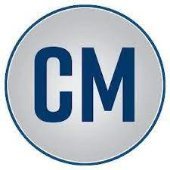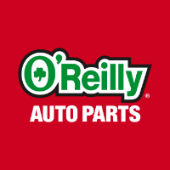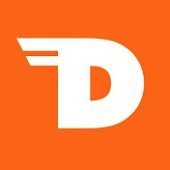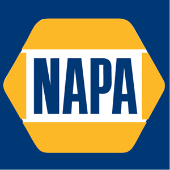-
Welcome to Auto Parts Forum
Whether you are a veteran automotive parts guru or just someone looking for some quick auto parts advice, register today and start a new topic in our forum. Registration is free and you can even sign up with social network platforms such as Facebook, X, and LinkedIn.
Replacement Parts For European Vehicles
-
Similar Topics
-
By Dorman Products
Cost-effective replacement intake manifold for Ford Coyote 5.0s | Dorman OE FIX 615-916
-
By NAPA
ATLANTA, April 18, 2024 /
link hidden, please login to view/ -- Genuine Parts Company (NYSE: GPC), a leading global distributor of automotive and industrial replacement parts, announced today its results for the first quarter ended March 31, 2024. "Our performance in the quarter highlights the value of our business mix paired with our geographic diversity as our teams delivered profits that were ahead of our expectations," said Paul Donahue, Chairman and Chief Executive Officer. "We did this by staying focused on both our near- and long-term strategic initiatives to improve our business and drive profitable growth. I want to take a moment to thank our GPC teammates across the globe for their hard work and dedication to delivering value for our customers."
First Quarter 2024 Results
Sales were $5.8 billion, a 0.3% increase compared to $5.8 billion in the same period of the prior year. The sales result is attributable to a 1.9% benefit from acquisitions, offset by a 0.9% decrease in comparable sales and 0.7% unfavorable impact of foreign currency and other.
Net income was $249 million, or $1.78 per diluted earnings per share. This compares to net income of $304 million, or $2.14 per diluted share in the prior year period.
Adjusted net income, which excludes a net expense of $62 million after tax adjustments, or $0.44 per diluted share, in non-recurring costs related to our global restructuring, was $311 million. This compares to net income of $304 million for the same three-month period of the prior year, an increase of 2.3%. On a per share diluted basis, adjusted net income was $2.22, an increase of 3.7% compared to diluted earnings per share of $2.14 last year. Refer to the reconciliation of GAAP net income to adjusted net income and GAAP diluted earnings per share to adjusted diluted earnings per share for more information.
First Quarter 2024 Segment Highlights
Automotive Parts Group ("Automotive")
Global Automotive sales were $3.6 billion, up 1.9% from the same period in 2023, reflecting a 0.2% increase in comparable sales and a 2.8% benefit from acquisitions, partially offset by 1.1% unfavorable impact of foreign currency and other. Segment profit of $273 million increased 3.2%, with segment profit margin of 7.6%, up 10 basis points from last year.
Industrial Parts Group ("Industrial")
Industrial sales were $2.2 billion, down 2.2% from the same period in 2023, with a 0.5% benefit from acquisitions, offset by a 2.6% decrease in comparable sales and 0.1% unfavorable impact of foreign currency. Segment profit of $271 million increased 3.4%, with segment profit margin of 12.3%, up 70 basis points from the same period of the prior year.
"We are pleased with the start to 2024, which was highlighted by operating discipline that delivered improved overall earnings against a backdrop of low sales growth," said Will Stengel, President and Chief Operating Officer. "In Industrial, sales decreased low-single-digits, in-line with our expectations, as we were up against our most difficult comparative period for the year. In Automotive, the actions taken in our U.S. Automotive business are gaining traction, and we are encouraged by the sequential improvement in performance. This improvement, coupled with the solid performance of our other businesses, is reflected in our reaffirmed sales growth and improved earnings outlook for 2024."
Balance Sheet, Cash Flow and Capital Allocation
The company generated cash flow from operations of $318 million for the first three months of 2024. We used $178 million in cash for investing activities, including $116 million for capital expenditures and $135 million for M&A. We also used $175 million in cash for financing activities, including $133 million for quarterly dividends paid to shareholders and $38 million for stock repurchases. Free cash flow was $203 million for the first three months of 2024. Refer to the reconciliation of GAAP net cash provided by operating activities to free cash flow for more information.
The company ended the quarter with $2.5 billion in total liquidity, consisting of $1.5 billion availability on the revolving credit facility and $1.0 billion in cash and cash equivalents.
2024 Outlook
The company is updating full-year 2024 guidance previously provided in its earnings release on February 15, 2024. The company considered its recent business trends and financial results, current growth plans, strategic initiatives, global economic outlook, geopolitical conflicts and the potential impact on results in updating its guidance, which is outlined in the table below.
link hidden, please login to view 
-
By Rade
Hello, does anyone know name of company who put that sticker on goods?
Via that company can order every part from OE for Vw Audi Skoda Seat Bmw Mercedes Porsche Land Rover and same..





Recommended Posts
Join the conversation
You can post now and register later. If you have an account, sign in now to post with your account.
Note: Your post will require moderator approval before it will be visible.